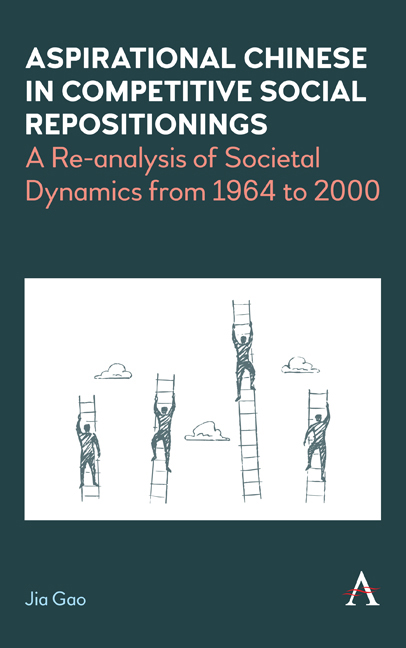 Aspirational Chinese in Competitive Social Repositionings
Aspirational Chinese in Competitive Social Repositionings Book contents
- Frontmatter
- Contents
- List of Abbreviations
- List of Figures
- List of Tables
- Preface and Acknowledgements
- One The Absence of Everyday Chinese in the Dichotomous Paradigm
- Two Rebranding the Communist Heir Narrative and the Cultural Revolution
- Three Tearing the Utopian Veil Down By the Sent-Down Youth
- Four Crying Out for Changes in the Second Half of the 1970s
- Five Battling for the Advantages Under the Dengist Political Alliances
- Six Climbing Different Social Ladders From the Mid-1980s
- Seven Filling in the Post-1989 Vacuum Left By Educated Liberals
- Eight Seizing Chances to Be Entrepreneurial in Post-1992 China
- Nine Towards a Theory of Competitive Social Repositioning
- References
- Index
Seven - Filling in the Post-1989 Vacuum Left By Educated Liberals
Published online by Cambridge University Press: 28 February 2024
- Frontmatter
- Contents
- List of Abbreviations
- List of Figures
- List of Tables
- Preface and Acknowledgements
- One The Absence of Everyday Chinese in the Dichotomous Paradigm
- Two Rebranding the Communist Heir Narrative and the Cultural Revolution
- Three Tearing the Utopian Veil Down By the Sent-Down Youth
- Four Crying Out for Changes in the Second Half of the 1970s
- Five Battling for the Advantages Under the Dengist Political Alliances
- Six Climbing Different Social Ladders From the Mid-1980s
- Seven Filling in the Post-1989 Vacuum Left By Educated Liberals
- Eight Seizing Chances to Be Entrepreneurial in Post-1992 China
- Nine Towards a Theory of Competitive Social Repositioning
- References
- Index
Summary
This chapter begins with a brief explanation of events during the politically turbulent period covered by the second half of Chapter six and the present chapter. Many readers know that this period includes the 1989 Tiananmen protests, which lasted several months before the military crackdown on 4 June 1989. Historically, this was the PRC's third large-scale crackdown on activist members of the urban educated elite. In 1957, the Anti-Rightist Campaign was carried out by the CCP in response to the widespread and strong criticism voiced by many urban citizens during the Hundred Flowers Campaign. Much of this criticism went far beyond what the first generation of PRC leaders were prepared to tolerate, particularly in the aftermath of the Hungarian Revolution of 1956. As many as half a million Chinese people were persecuted according to official figures. The second major assault was the Cultural Revolution from 1966 to 1976; while this impacted on almost every section of the Chinese population, educated people had always been the key target of class struggle. Millions of educated Chinese were abused in one way or another. What occurred in Beijing, as well as in several other cities, in 1989 and the purge that ensures were a third attack on the new educated elites, with tens of thousands ousted from their posts in the party-state system and forced to seek a living elsewhere.
As noted in previous chapters, the analysis in this chapter is based on this third crackdown, but focuses on the understudied aspects of this historical episode, as well as the problem of laid-off (xiagang) workers, which worsened around the same time. At first glance, the laid-off worker issue caused by SOE reforms after the mid-1980s, notably in 1994 and 1995, was distinct from the trouble facing educated liberals; however, many of those affected by each sought to reposition themselves in the same employment market.
The 1989 Tiananmen protests have been well documented in English, providing readers with ample details about the event; however, the political and social vacuum left by the crackdown has not been clearly explained. The 1989 clampdown was a sudden turn to the political left, quelling the demonstrations and reintroducing various social control measures. It was soon followed, however, by China's unprecedented economic growth. A very clear and sharp zigzag change of political direction emerged before many people had recovered from their anger and sadness of the crackdown on the student rallies.
- Type
- Chapter
- Information
- Aspirational Chinese in Competitive Social RepositioningsA Re-Analysis of Societal Dynamics from 1964 to 2000, pp. 141 - 164Publisher: Anthem PressPrint publication year: 2023


